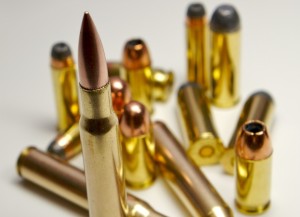Lead is a high density material that is abundant, easy to harvest, and malleable, making it easy to shape and customize to specific designs. As such, lead has enjoyed heavy use in a wide number of applications. The diversity for uses of lead really is quite amazing— lead is used in paint, gasoline, ammunition, radiation shields, counterweights and much more. Ultimately, the advantages of lead stem primarily from two fundamental attributes: high density and low cost. Unfortunately, despite the widespread utility of lead in a number of industries and applications, it is nevertheless a known toxic material that can be dangerous both to humans and the environment after prolonged or repeated exposure.
 Lead performs very well in its intended application, however, its toxicity can act as collateral damage and while it may solve one problem, it may create another through its use. For example, while lead performs great as an x-ray shielding, wearing lead garments for x-ray treatments exposes humans to a wide array of potential health complications and illnesses. This dynamic is also true of ammunition. Most shot are at present created from materials containing lead. Utilizing ammo containing lead can lead to lead pollution at indoor and outdoor ranges and exposes employees and customers to significant health concerns.
Lead performs very well in its intended application, however, its toxicity can act as collateral damage and while it may solve one problem, it may create another through its use. For example, while lead performs great as an x-ray shielding, wearing lead garments for x-ray treatments exposes humans to a wide array of potential health complications and illnesses. This dynamic is also true of ammunition. Most shot are at present created from materials containing lead. Utilizing ammo containing lead can lead to lead pollution at indoor and outdoor ranges and exposes employees and customers to significant health concerns.
Drawbacks of Lead Ammunition
The potential for lead pollution and lead poisoning requires range owners to invest in expensive and sophisticated air filtration systems. Moreover, they must take care to adhere to the Occupational Safety and Health Administration’s (OSHA) standards regarding the safety measures and protocols required to keep a range and its employees safe from lead pollution, including air quality, surface contamination, safety gear and various other standards. When lead ammunition is fired it spreads lead vapor and dust, insidious toxins. The vapor gets into the air supply and is breathed constantly by employees and customers without proper ventilation systems.
Lead ammunition used at outdoor ranges eventually degrades and poisons the soil and groundwater, which has led to closure for a number of ranges. The debased soil from these ranges must be uprooted and discarded as unsafe waste at incredible cost. Slug traps, albeit viable in lessening the siphoning impacts of lead, need to be routinely cleaned by organizations specializing in toxic waste collection.
Lead Free Ammunition
Headways in engineering and material science have prompted an extensive number of modern lead free ammunition alternatives to standard lead rounds. These lead free ammunition match the performance of lead ammo without any health concerns. Lead free ammunition are generally produced from composite materials, either a metal composite such as tin and copper, or a thermoplastic composite which combines standard plastics with metal powders such as copper and tungsten. Unfortunately, these alternatives come at a price as almost none can compete with the low cost of lead. In fact, it is lead’s low cost which is seriously inhibiting the move to alternatives in a wide number of industry and applications as people understand more and more the health concerns of lead, but still enjoy its low cost.
The least expensive lead free ammunition option is steel shot being on average 20% more expensive than lead shot. There are also shot alternatives produced from bismuth, tungsten and tin which may be closer form a ballistic perspective to lead than steel is. The lead replacement alternative for air gun pellets is most commonly tin and zinc-aluminum pellets. While tin pellets are asserted to be almost identical to lead pellets, the consensus on zinc-aluminum pellets is not generally positive. The significant disadvantage of tin pellets is by all accounts a cost increase of 1.5-6 times as compared with lead pellets.






0 comments:
Post a Comment